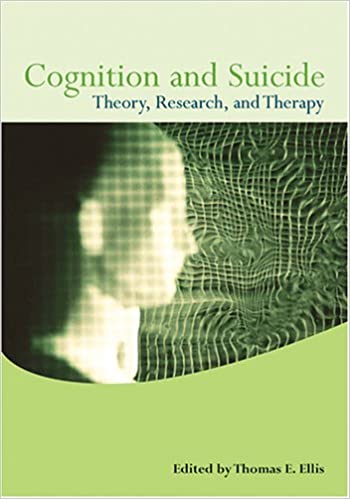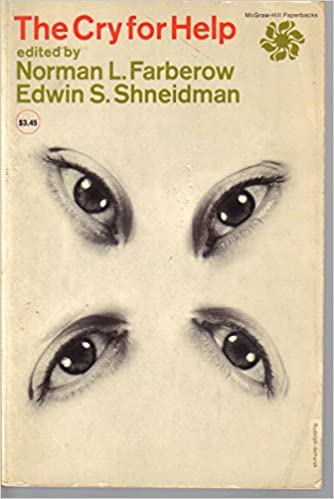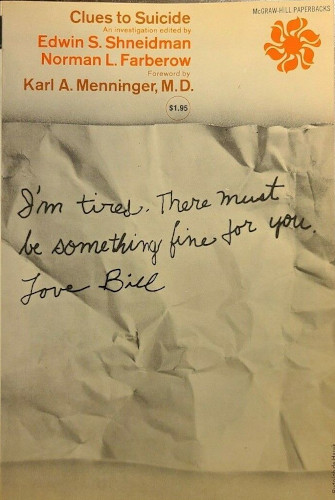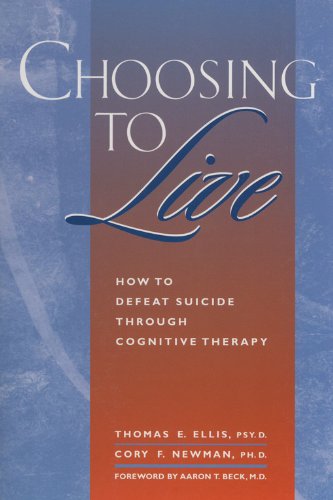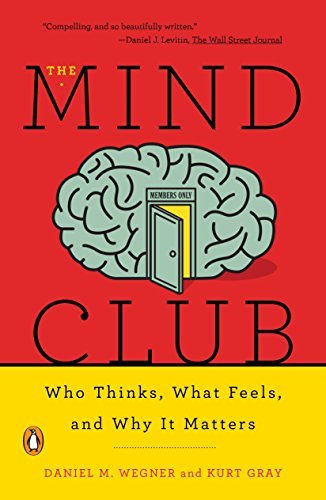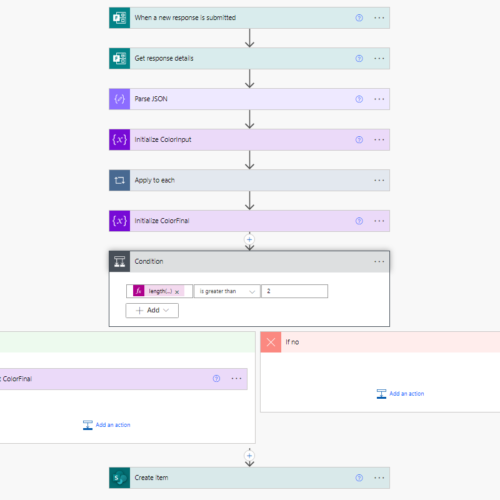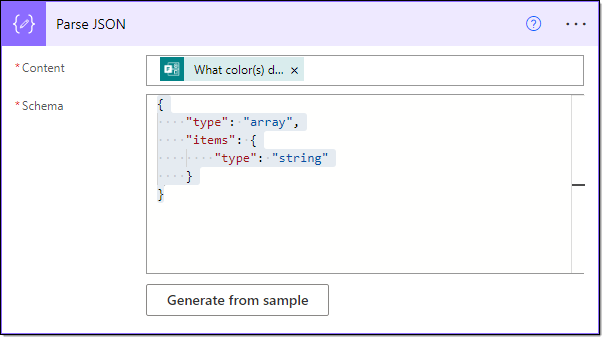Robert Bogue
March 22, 2023
No Comments
Of course, the way that you think about things leads towards or away from suicide. So, how do we find ways to lead people away from suicide as a valid option? That’s what Cognition and Suicide: Theory, Research, and Therapy is all about. How do we take what we know about cognition and apply it in ways that saves lives.
Connections
I explained in my review of Choosing to Live that I rarely post negative reviews. However, I didn’t explain why I read the book in the first place: it’s referred to from Cognition and Suicide. The editor of this volume, Thomas Ellis, is one of the authors on Choosing to Live. I realized that some of the factual errors that I saw there made their way to this volume – or vice-versa. As this is an academic volume rather than a consumer volume, the errors are substantially more constrained. In some cases, they have references for their statements – but when you get the referred to article or paper, you realize it says nothing about the item it’s cited for. This is concerning but not enough to eliminate the value produced by the authors in the volume.
High Expectations
As I began to explain in my review for American Suicide, higher expectations may be a factor in why people die by suicide. In 1971, Shneidman did a study where he saw a substantially higher number of suicides in the group with higher IQs – and therefore higher expectations.
The research on maximizers started in 1957 by Herbert Simon and was covered extensively in Barry Swartz’s book, The Paradox of Choice. Maximizers are those people – or, more accurately, those situations – where a decision has to be the absolute best. People who are maximizing are looking for the best sale price and will be disappointed if next week there’s a better sale, and they missed out on an insignificant discount. The goal ceases to be about getting a good deal or a fair deal and becomes competitive – it must be the best. The research that has continued along the lines that Simon started has indicated that people who are maximizers are more depressed – less happy.
The truth is that we’re neither pure maximizers nor the opposite, pure satisficers. We find ourselves alternating between the two depending upon the situation and our mood. That being said, there are people who tend to do more maximization – and they’re less happy. If we were to extend this into suicide potential, it follows that someone who is focused on maximization will frequently fall below their expectations.
High IQ
One of the notes are Shneidman’s analysis of 30 cases of people with high IQs – a disproportionate number of which died by suicide. How can this be? The answer may fall in the tendency for those with high IQs to have been told of their results and therefore expected more of themselves. After all, if you’re smarter than the average bear, your life shouldn’t be average. You shouldn’t have the same challenges that everyone else does – except that you do.
With high IQ, they got high expectations and a propensity to maximize in themselves and in others. From other research we could assume that they’ll be less happy and more susceptible to suicidal thoughts.
Bias Towards Action
Humans are wired with a bias towards action. If there are two equal probabilities of success with a passive strategy and an active one, we’re likely to choose the active one, because we believe we have more control. Control is an illusion, to be sure. (See Compelled to Control for more.) However, what’s more interesting is our relationship with regret and guilt. We regret the things that we didn’t do – the actions that we didn’t take – substantially more powerfully than we regret the things that we do.
The sayings go, “It’s better to have tried and failed than to have never tried at all,” and “You miss 100% of the shots that you don’t take.” It’s clear that we’re wired to do. It’s this complicated relationship with action that may explain, as Shneidman observed, the bias that suicidal people have towards action. One of the most dangerous times for someone is the time when they’re recovering from depression. Depression has a psychomotor retardation that prevents action – and therefore an attempt at suicide. During recovery from depression, this psychomotor retardation sometimes wanes before the feelings of hopelessness and despair. The result is people take action on the suicidal act they never had the energy to do before.
Viewed from the lens of helplessness, the action is an attempt to control or influence their situation and thereby avoid helplessness, so their action can be seen as them desperately fighting against it. If they can demonstrate influence over their pain, they’re not truly hopeless. That’s why suicide itself is sometimes seen as a final act of control.
Reduce Depression, Reduce Suicide
One of the difficulties in dealing with suicide is that actual completions are rare – while a good thing it represents a challenge in directly addressing the rate. One of the side effects of this is that we start to look for indirect (proximal) effects. Instead of researching the reduction in suicide directly, we look at a covariate like depression and try to reduce it with the belief that this will lead to a reduction in suicides. Unfortunately, this hasn’t turned out to be the case.
Economists once tried to stabilize the economy through increasing home ownership, because it seemed like this was a good thing and would lead to more stability. After all the two were covariates – change one and you change the other. At least, that’s the story. The manipulation led to the meltdown of the financial system in 2008. (See The Halo Effect for more.) Sometimes, what seems to make sense doesn’t actually.
Perturbation
It’s Shneidman’s word for emotional disturbance. It’s one of his key factors for suicidality, and I mentioned it in my review of Suicide: Understanding and Responding – without attributing it to Shneidman (oops). However, I didn’t address a conceptual underpinning often missed with the concept.
Perturbation is a discomforting. It’s a feeling of things being wrong – and it’s something that we seek to minimize. Quiet Leadership says that, in fact, much of our society is set up to minimize discomfort. If we look objectively at the drug problem, we see that it’s a solution to a variety of other problems. In most cases, drugs start out as a solution to some inner pain. It’s a way of coping with pain that progressively takes control over the person. (See Chasing the Scream, The Globalization of Addiction, and Dreamland for more.)
Michell tested children at the Stanford Bing Nursery Center and ultimately learned that those who could delay gratification did better in life. (See The Marshmallow Test.) These children had already learned how to address the distress of not being able to have a sugary treat right now. They learned that their struggle against the desire was okay. Many of the most successful children were using their own distraction techniques to allow them to get the reward – double the treats.
Josh Waitzkin in The Art of Learning explains how he came to make peace with discomfort. A chess wiz turned martial arts guru knows a thing or two about both mental and physical discomfort. Anders Ericsson and Robert Pool in Peak explain that people need to be pushed outside of their comfort zone by someone they trust. A coach is an essential ingredient of peak performance.
Coping with perturbation is about learning to tolerate distress long enough to find strategies that resolve it. When our distress can’t be tolerated, we’ll start to seek risky or far reaching solutions to problems that we should normally not be inclined to accept. Sometimes, distress tolerance is a set of distracting skills like those children used for The Marshmallow Test. Sometimes, distress tolerance is a coach or mentor assuring you that there is value to your suffering. Sometimes, it’s just a sheer act of willpower.
Willpower
Willpower is an exhaustible, renewable resource, as Roy Baumeister explains in Willpower. He recommends exercising it at appropriate levels – but not relying on it. Invariably, if we are relying on willpower, we’ll eventually exceed our capacity, and bad things will happen. Willpower as distress tolerance is “I’ll make it through.” While noble, this places an immense demand on our willpower and thereby depletes it quickly.
Hope
The problem with depleted willpower is we need it for hope. As Rick Snyder explains in The Psychology of Hope, hope isn’t an emotion. It’s a cognitive process. That process needs both willpower and waypower. If either are lacking, hope will be flagging or gone. Waypower, by the way, is knowing the path forward. It’s a plan or an approach, or even just a visionary direction. Often, immediately after an intense loss in the moments of perturbation, we’ll not know how to move forward – we’ll have little waypower – and as a result, depleting our willpower is especially dangerous.
The Embarrassment of an Attempt
For some people, it’s impossible – or very difficult – to discuss a prior suicide attempt. What seemed to make sense in the moment suddenly seems stupid in the light of day. They don’t know how they reached the point where an attempt made sense, but they don’t expect that admitting it is a good idea. In an ideal world, we’d want people to feel comfortable sharing their thoughts, particularly those leading up to the attempt, to detect the weaknesses in thinking that led to the attempt, but that requires a degree of safety that may be difficult to generate. In my review for The Fearless Organization, I explained that safety is a perception, and safety has as much (or more) to do with the person as it does the environment that someone creates.
The wisdom of 12-step groups says that “You’re only as sick as your secrets” or, less judgmentally, “Any load shared is lightened.” (See Why and How 12-Step Groups Work for more.) Critical Incident Stress Management (CISM) is a common debriefing tool for first responders who encounter potentially traumatic events on a regular basis. As I explained in my review of The Body Keeps the Score, CISM can be effective, but often first responders reject it, because it feels forced, artificial, and unsafe.
Unconditional Self-Acceptance (USA)
For most people, there are aspects of their personalities and their being that they struggle to accept. In my review of No Bad Parts, I explained one theory of consciousness that posits that we have multiple parts – not all of which are the same or present in every situation. We have parts of ourselves that are protecting other parts – sometimes in maladaptive ways. The fact that we have some aspects of ourselves that we’re not accepting can be problematic. It can lead to shame and its corrosive effects. (See I Thought It Was Just Me (But It Isn’t) for more.) That isn’t to say that people can’t desire to be better. Rather, it says that they should accept where they are now and recognize their capacity to get better. (See Mindset for more about this kind of growth mindset.)
Unconditional Other Acceptance (UOA)
At the heart of acceptance is a lack of judgement. We can accept ourselves without judgement, but we can also accept others without judgement. (See How to Be an Adult in Relationships for more on acceptance.) Unconditional Other Acceptance (UOA) is about accepting others where they are. We often judge people without accepting their circumstances led to their behavior. Daniel Kahneman calls it “fundamental attribution error” in Thinking, Fast and Slow. Lewin’s perspective is that all behavior is a function of both person and environment. (See A Dynamic Theory of Personality.) Therefore, we shouldn’t discount that the behaviors we observe may not be about the other person but rather about being in the environment they’re in.
Steven Reiss’ work focused on different basic motivators and how two people with different motivators will struggle to accept one another. (See Who Am I? and The Normal Personality for more.) By learning about how other people don’t see the world the same way we do, that their perspective is different and how their motivators or values or different, we can come to accept others more easily. (See The Difference for more about differences of perspectives.)
Unconditional Life Acceptance (ULA)
Moving from self to other to overall, unconditional life acceptance (ULA) acknowledges that there are some bad things in life, but those bad things are aren’t the only things. They are a part of the broader context that is often quite positive. It’s hard to accept the negative aspects of life. However, by accepting that they’re a part of life, you can also accept that there are good things in life, too. If we attempt to deny any part of life, we necessarily make it easier to discount the positive things as well.
Achievement
Getting things done, achieving things, seems like a good thing – and it is. However, achievements can hide an unwillingness to accept who we are. If our self-worth is connected to our achievements, then what happens when we’re no longer achieving great things? Instead of accepting ourselves, we find that we’re judging ourselves – and generally being negative. So, while we should encourage achievement in ourselves and others, we shouldn’t do it at the expense of our feeling worthy of love and respect – even if we’re not achieving anything.
The Downward Spiral
Sometimes, there’s a downward spiral that starts with simply becoming upset. Then judgement sets in, and we judge that we shouldn’t be upset (or the other person shouldn’t be upset). Then we’re upset because we’re upset (or they’re upset). This cycle, once started, is hard to stop. Frustration and judgement build until there’s a problem, and we’re thrown out of the cycle. The best solution is to simply know that being upset, or frustrated, or angry, or whatever is a normal part of life. We’ll feel things that may or may not make sense on the surface, but these feelings are normally short-lived. In How Emotions are Made, Lisa Feldman Barrett shares a story how she once confused getting ill with falling in love – and how easy it is to forget how transitory our feelings are.
Missing the Positive
Depressed people do see the world more accurately than non-depressed people. (See Superforecasting and The Signal and the Noise for more.) But just because they see the future more accurately doesn’t mean that it’s better – or that they don’t have gaps. Severely depressed people don’t foresee negative events with greater frequency or intensity than non-depressed people as much as people who are depressed fail to correctly anticipate positive events.
They require more prompting, more proof, and more persistence to see that there are, in fact, good things that can – and will – happen in the future. Of course, we’re no more able to make an accurate prediction of the ratio of good to bad things than they are – but to exclude the possibility of positive things happening in the future is a unique characteristic of depression.
Gaslighting
One of the most damaging forms of invalidation is when the victim is made to believe that they deserved the abuse they received. This exists in a malicious form, where a villain intentionally deflects blame from themselves. However, it also exists in a form where a random tragedy happens, and people accept responsibility for its occurrence when it’s not possible for them to have known or prevented the tragedy. Too often, parents of children that die by suicide are haunted by the idea that they could have prevented it. Unfortunately, most of the time, the way of preventing it requires magical premonition to understand the degree of challenge their child faced.
Similar situations are faced by those who have lost love interests. They ask the question of why they weren’t enough for their partner to stay. They believe if they had been present at the moment or if they had been more attentive or loved them “better,” they’d still be around. Of course, this transfers the responsibility from the person who died by suicide – whose responsibility it is – to another person who could not have possibly controlled the situation or prevented it from occurring.
Another variation is where someone is gaslighted – that is, made to believe that whatever it is that they’re talking about never happened. There are some rather ludicrous claims like that the Holocaust never happened, but most gaslighting is much more subtle. In the context of suicide, persistent gaslighting of someone would naturally cause them to question the accuracy of their memories and feel less connected with reality.
Mind Control
One of the greatest “tricks” of humanity is the ability to read the minds of others. Theory of mind allows us to anticipate what others are thinking and thereby work more cooperatively with them. (See The Blank Slate and Mindreading for more.) These skills do not extend to detailed knowledge of someone else’s innermost thoughts. In Telling Lies, Paul Eckman explains that even micro-expressions, which are detectable “tells” of emotion, don’t help you understand what triggered the emotion. Nor do our powers of mind-reading cross over into the realm of mind control. We cannot force someone else to think a particular way. However, this doesn’t stop some people from exerting as much control as possible – sometimes in the form of a suicide attempt.
Suicide attempts are sometimes cries for help. (See The Cry for Help for more.) While this isn’t to say that a suicide attempt should ever be taken lightly, it’s a recognition that sometimes people don’t believe they’re getting enough attention. Much like delinquent children, they’ll take any attention – even bad attention. (See Delinquent Boys for more on delinquency.) Ultimately, it’s hard to predict how others will respond, so a suicide attempt is a bad way to try to get attention.
Depersonalization
In response to overwhelming emotional stress, people learn to depersonalize. Often, this skill is learned as children, when their skills for processing emotions are overwhelmed by some life event. How Children Succeed explains in detail the work in the Adverse Childhood Experiences (ACE) study and how adverse childhood experiences shape people’s long term success. The study doesn’t say whether the children develop depersonalization as a coping strategy, but we do know that trauma patients often experience depersonalization. (See The Body Keeps the Score for more on trauma-induced depersonalization.)
Overgeneralization
A curious finding separates those who have attempted suicide from a control population. It’s much like what was found when real suicide notes were compared with notes written by a control group told to write a suicide note – but much less specific to suicide notes. (See Clues to Suicide for more.) When suicide attempters were asked to recall a specific memory, they more often responded with an overgeneralized memory rather than a specific memory. While a matched control group responded with specific instances, the suicide attempters did not. Since the original study, the overgeneralization of memory has been studied frequently and often indicates a disorder, where recall of specific memories does not.
Burdensomeness
One of the factors that Joiner’s model of Interpersonal-Psychological Theory of Suicide posits as a causal factor is burdensomeness. Atul Gawande in Being Mortal explained that even taking care of a plant was enough to help the elderly live longer. The belief that they needed to be there to care for another life – even a plant – can be powerful. One of the powerful ways that people can fight suicide is to fight people’s feelings of burdensomeness, and that can be done by having those who are suicidal helping others. This service to others puts a finger on the scales and starts to bias it in a way that is more positive, where people don’t believe that they’re a burden to others – in the big picture.
There’s no way to totally eliminate the feelings of burdensomeness – but a little bit of service, as 12-step groups have learned, can go a long way. (See Why and How 12-Step Groups Work for more.)
Fluid Vulnerability
As I mentioned in my review of Brief Cognitive-Behavioral Therapy for Suicide Prevention, the fluid vulnerability theory of suicide posits that suicidal crises are time-limited, and therefore it’s often a good thing to be present with someone until the feelings of dying by suicide have passed. While this may sometimes require handoff and won’t work for those who believe they’ve rationally decided that death is the best answer, it can be important in most cases.
Understanding how most people who are considering suicide will only ponder it for a short time is important – even if there are exceptions. In the end, the more we know about Cognition and Suicide, the more lives we can all save.


